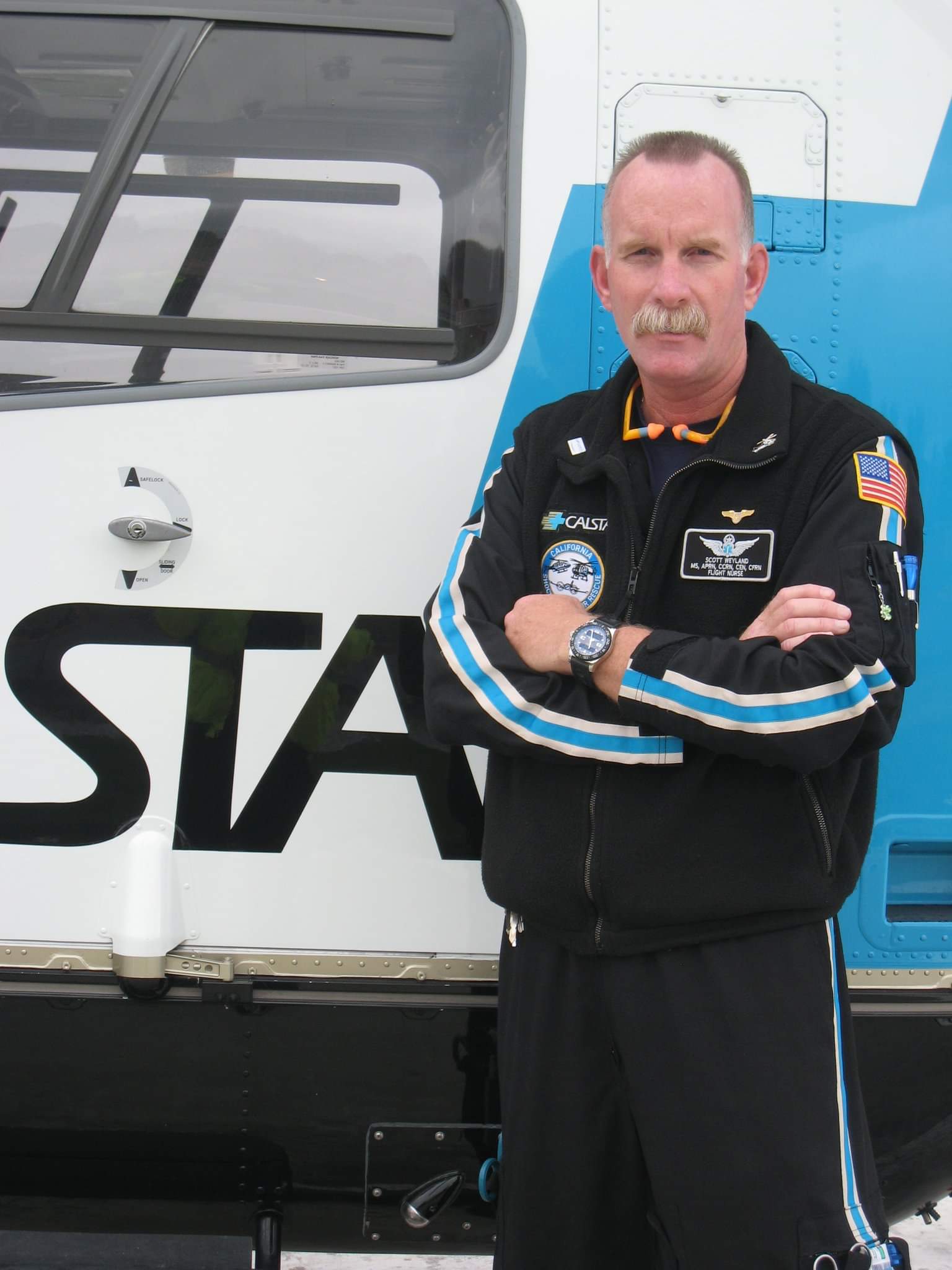Scott Weyland
Flight Nurse
With nearly 40 years of emergency medical service (EMS) experience, you might say Scott Weyland is among the most accomplished first responders in the industry. He was one of the first clinicians to take the Certified Flight Registered Nurse (CFRN) exam and among the earliest to complete what was then known as the Flight Nurse Advanced Trauma Course (FNATC), now called the Transport Professional Advanced Trauma Course (TPATC). For a time, he served as a FNATC instructor. He also contributed to the field in a lasting way by writing the “Patient Preparation” chapter in the first Flight Nurse Core Curriculum, as well as serving as an item-writer and excam committee member for the CTRN/CFRN exams.
Scott began his career in 1986 with the East Bay Regional Park Police Helicopter Unit as a flight medic which was a Basic Life Support rescue aircraft. In 1989, he began working for Mobile Life Support in Burlingame, CA as a crticial-care transport nurse. This led to the opportunity to fly for REACH in Santa Rosa, CA in 1990; when the program had a single helicopter.
Throughout his career, Scott has served in many roles, including base coordinator, clinical manager and transport nurse for high-acuity patients. In 1992, he joined Samaritan Air Evac; the company based in Phoenix, AZ that operated rotor-wing, fixed-wing, and long-range jet transports and provided commercial medical escorts. There, he helped lead the Parker and Chandler bases while also flying as an adult/pediatric flight nurse and a member of the intra-aortic balloon pump transport team.
Finally, Scott joined CALSTAR, a REACH company, in 2000 where he climbed the ranks, becoming the chief flight nurse and clinical manager of Santa Clara/Santa Cruz/San Benito Counties. He also worked for American Medical Response’s critical care transport division in Monterey and Santa Clara Counties during that time. Today, you can find him at REACH 033 and 036 (CALSTAR 2 and 5) working as a flight nurse when not receiving patients at the local trauma center as a trauma nurse practitioner.
What initially drove Scott to EMS was the opportunity to combine aviation and patient care, something new and rare at the time. When that combination became standard practice, he wanted to meet two distinct challenges: providing advanced care in dynamic transport environments and managing the needs of vulnerable patients; including children and pregnant individuals with high-risk complications.
He achieved both over the years and built important critical-thinking skills, such as diagnosis management and situational awareness. Scott has also held many leadership positions, and there’s one key piece of advice he shares with anyone who may be interested in an EMS career:
“We should always keep in mind that for us to have a good day, somebody must have a bad day. Meaning, we only go when there is a patient in need. Don’t forget to connect with the patient and/or family. Be honest with yourself, assess your knowledge and skills regularly, and seek opportunities to develop and prepare for their needs.”
Such an example is precisely what distinguished Scott as an EMS pioneer. Embrace the wisdom of his words, practice and adapt, and your own success could be one for the books too someday. Maybe even the next edition of the Flight Nurse Core Curriculum.
